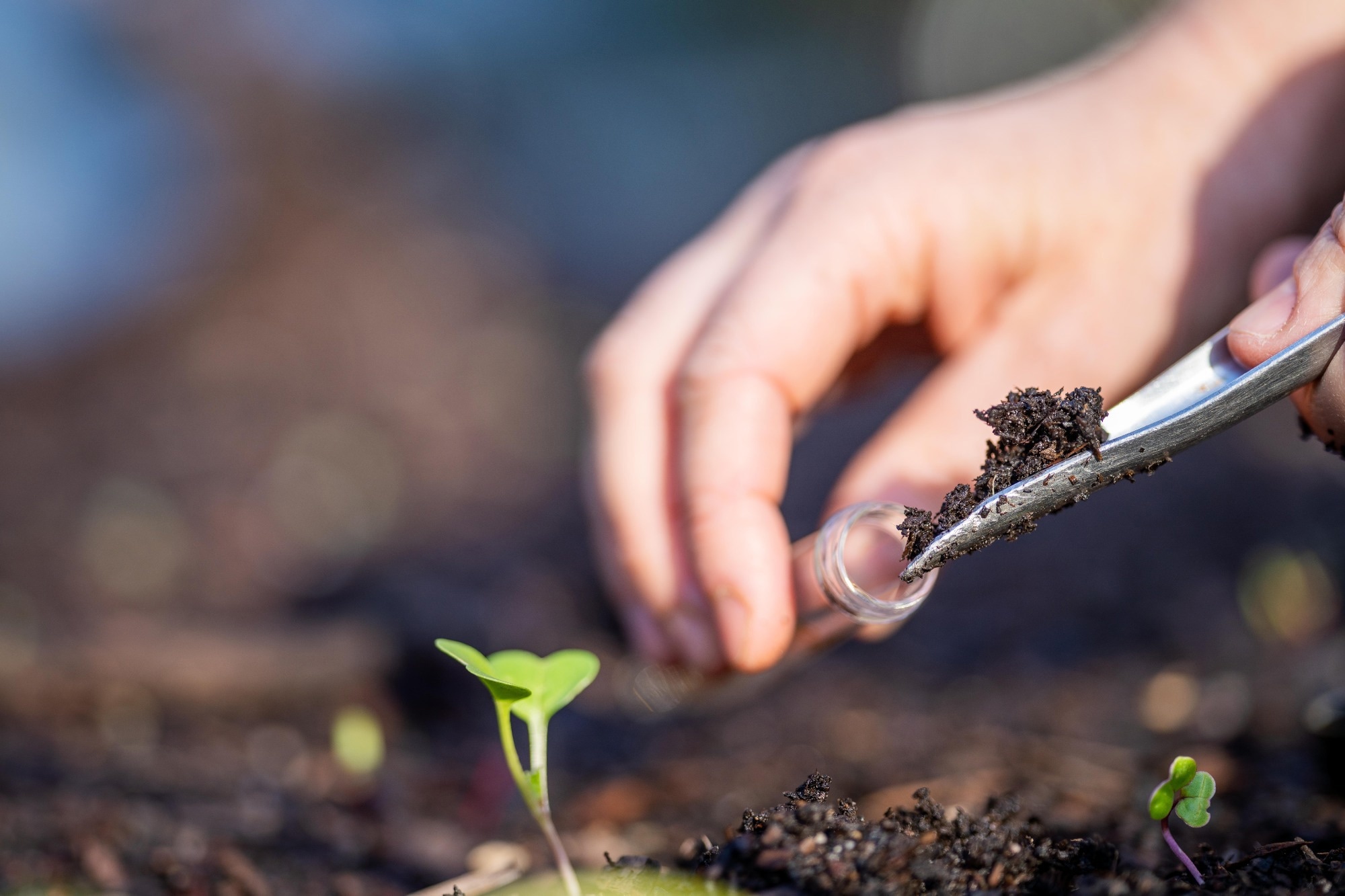 By Pooja Toshniwal PahariaReviewed by Lexie CornerJun 23 2025
By Pooja Toshniwal PahariaReviewed by Lexie CornerJun 23 2025A recent study published in Microbiome examined the effects of collagen and chitin soil amendments on microbial communities and their potential to reduce Meloidogyne enterolobii (root-knot nematode) infections in tomato plants.
The amendments altered soil bacterial and fungal compositions, increasing the presence of potentially beneficial microbes. These changes were associated with improved plant health, including increased chlorophyll content and biomass, and reduced nematode egg counts.
 Image Credit: William Edge/Shutterstock.com
Image Credit: William Edge/Shutterstock.com
Background
M. enterolobii is a root-knot nematode that significantly reduces global tomato yields. Chemical nematicides are often expensive and carry environmental and health risks. In contrast, beneficial soil microbes that antagonize nematodes offer a sustainable biological approach to plant disease management.
Soil amendments can influence microbial communities. Collagen is important for nematode cuticle structure; adding it to soil may promote collagenase-producing microbes that could damage the parasite’s cuticle.
Similarly, chitin supports the structure of nematode eggs, and chitinase-secreting microbes may reduce infection levels. Collagen may enhance photosynthesis by increasing chlorophyll content, while chitin may help plants tolerate stress.
Study Design
The researchers investigated whether collagen and chitin could modify soil microbiomes and suppress M. enterolobii infections in both native (Na) and agricultural (Ag) soils.
In greenhouse experiments, tomato seedlings were planted five weeks after germination. Before planting, soils were amended with 0.2 % w/w collagen and 1.0 % w/w chitin. On the same day, three holes were made near each plant’s roots, and nematode eggs were introduced.
Four treatment groups were used for each soil type:
- Nematode eggs only (N)
- Chitin plus nematode eggs (Ch)
- Collagen plus nematode eggs (Co)
- Control (C, no amendments or eggs)
Treatments were tested under two conditions: standard inoculum (5,000 eggs/plant for 45 days) and high inoculum (50,000 eggs/plant for 60 days), to represent varying levels of pathogen pressure.
Plant growth was assessed using root fresh weight (RFW) and shoot dry weight (SDW). Leaf chlorophyll content was measured using absorbance values for chlorophyll A, chlorophyll B, and carotenoids. Nematode infection severity was evaluated using a gall index based on egg mass and gall counts.
Rhizosphere soil samples were analyzed to assess microbial composition and function. Bacterial and fungal communities were profiled using 16S rRNA and ITS sequencing, respectively. Operational taxonomic units (OTUs) were assigned using the SILVA (bacteria) and UNITE (fungi) databases.
PhenotypeOTU network analysis (PhONA) was used to identify co-occurrence patterns between microbial taxa and plant health indicators. Logistic regression was applied to explore associations between specific OTUs and plant phenotypes. OTU-OTU network analysis further identified positive and negative relationships within microbial communities.
Soil metabolites were analyzed using ultra-performance liquid chromatography tandem mass spectrometry (UPLC-MS/MS). Partial least squares discriminant analysis (OPLS-DA) was used to compare metabolic profiles across treatments, and variable importance in projection (VIP) scores identified the most influential metabolites.
Results
Chitin and collagen reduced M. enterolobii egg counts by 66–84 %, depending on inoculum pressure. The amendments also increased chlorophyll content by 100–170 % and improved plant biomass. These effects suggest reduced disease stress and potential biostimulant benefits.
The amendments shifted microbial composition, reducing overall diversity but increasing the abundance of taxa such as Streptomyces, Kitasatospora, Bacillus (bacteria), and Phialemonium (fungi). Many of these organisms produce collagenase or chitinase, which may contribute to nematode suppression. PhONA analysis identified Streptomyces as a core microbiome member associated with lower disease incidence.
Amino acid metabolites were more abundant in soils under standard inoculation conditions. In native soil, collagen and chitin significantly boosted plant growth: SDW increased by 330 % (collagen) and 310 % (chitin), and RFW increased by 170 % and 200 %, respectively. These effects were less pronounced in agricultural soils.
Under high inoculum conditions, the amendments reduced nematode egg density by 81 % (chitin) and 84 % (collagen) in agricultural soil. The reduction may also reflect increased competition among nematodes under crowded conditions.
Download your PDF copy now!
Conclusion
Collagen and chitin soil amendments supported beneficial microbial communities that helped suppress M. enterolobii infection. In addition to reducing nematode populations, the amendments improved plant growth and chlorophyll content. The effects varied with soil type and pathogen load.
These findings suggest that collagen and chitin may be useful components of integrated nematode management strategies. Future work should explore the mechanisms underlying the interaction between these amendments, soil microbes, and nematode populations and evaluate their effectiveness across different environments and crop systems.
Journal Reference
Pasche, J.M., et al. (2025). Underground guardians: how collagen and chitin amendments shape soil microbiome structure and function for Meloidogyne enterolobii control. Microbiome. DOI: 10.1186/s40168-025-02132-8, https://microbiomejournal.biomedcentral.com/articles/10.1186/s40168-025-02132-8